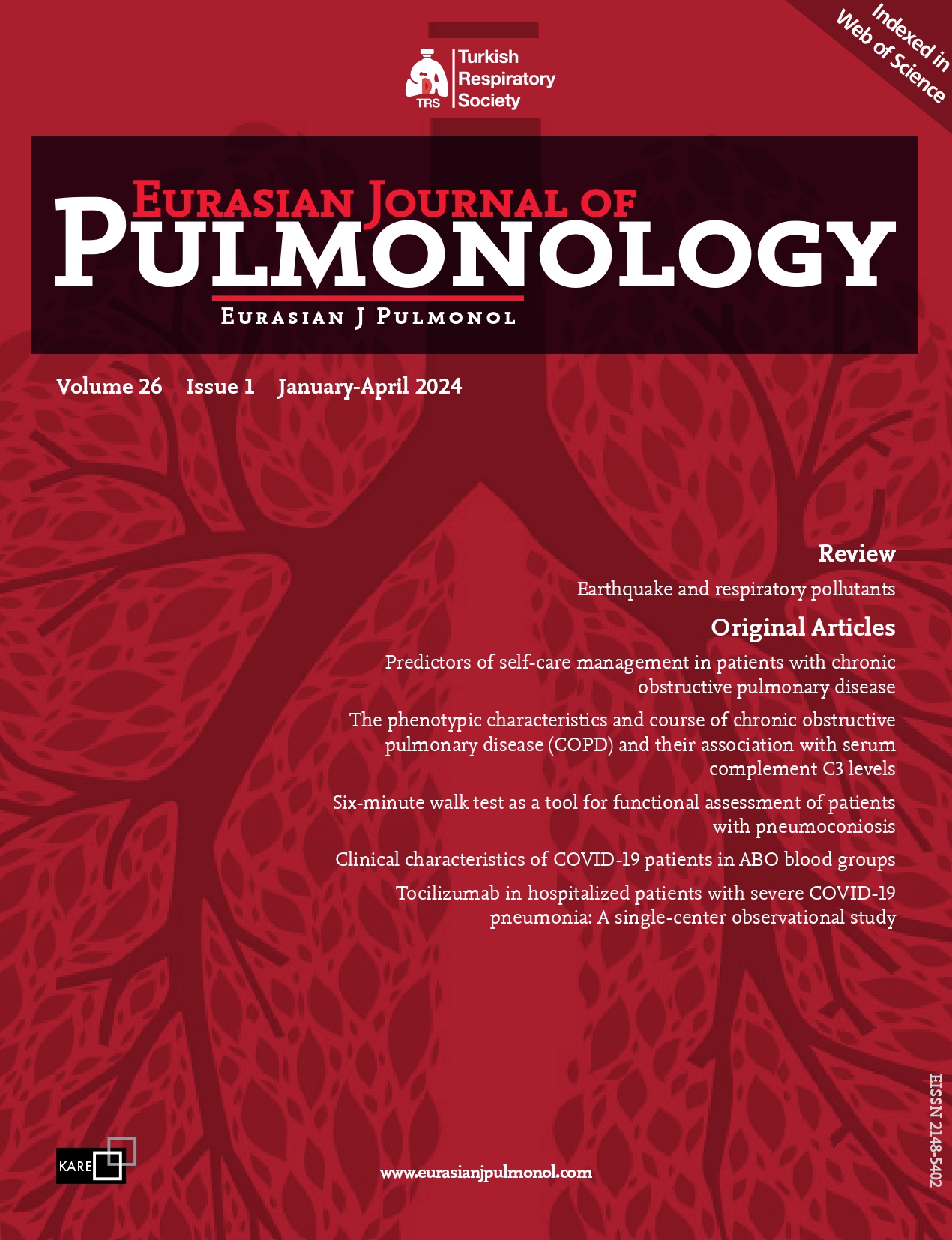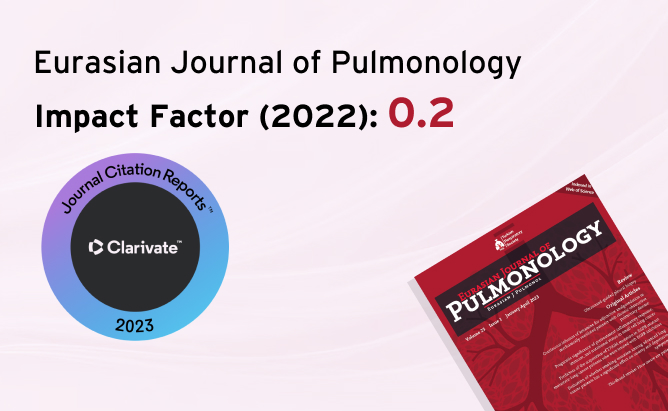2Department of Radiology, Sivas Cumhuriyet University, Sivas, Türkiye
Abstract
Background and Aim: The aim of the study was to assess the correlation between pulmonary function parameters, disease severity, and the one-minute sit-to-stand test (1MSTST) among patients recovering from COVID-19 at the one-year follow-up. It was investigated whether the 1MSTST could serve as a practical alternative to pulmonary function tests, particularly under pandemic conditions
Methods: A retrospective cohort study was conducted at a State Hospital. Data were collected from patients diagnosed with COVID-19 pneumonia between November 2020 and June 2021. Demographic, clinical, and laboratory information was gathered, along with pulmonary function test results and the 1MSTST. Correlation analysis was employed to evaluate relationships between these variables.
Results: Ninety-seven patients were included, with a median age of 55 years. Pulmonary function tests demonstrated mean FEV1 and FVC values of 2.4 ± 0.8 and 3.0 ± 0.9, respectively. The median 1MSTST was 11 (10-13). Oxygen therapy was required in 52.6% of patients, and a proportion of patients required intensive care or mechanical ventilation. Positive correlatons were found between FEV1, FVC values, and 1MSTST performance (r=0.35, p<0.001; r=0.32, p=0.001, respectvely). Lower CRP levels and younger age were associated with better 1MSTST performance.
Conclusion: It was found that better pulmonary function parameters were associated with better performance in the 1MSTST. This highlights the potential of the 1MSTST as an alternative assessment tool for post COVID-19 recovery. Lower CRP levels and younger age were associated with better 1MSTST performance, underscoring the role of inflammatory and age-related factors. Our findings may help the physician to evaluate and follow-up for patients with post-COVID syndrome.





 Çağla Koç1
Çağla Koç1 



